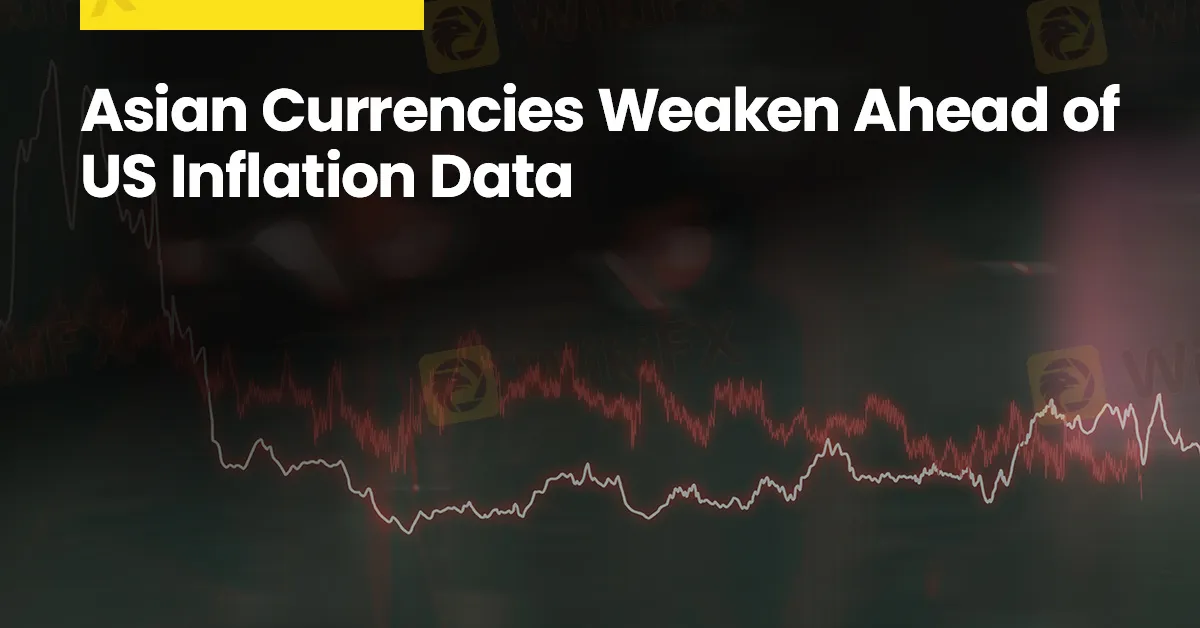Abstract:Anticipation Builds as Federal Reserve's Policy Stance Hangs on Inflation Figures

Anticipation Builds as Federal Reserve's Policy Stance Hangs on Inflation Figures
Asian currencies faced downward pressure on Friday, while the US dollar stabilized as market participants awaited crucial inflation data that could influence the Federal Reserve's decisions on interest rates.
Despite a recent decline in the dollar following softer-than-expected US gross domestic product (GDP) data, which provided some respite for Asian currencies, persistent expectations of prolonged high interest rates in the US tempered any significant gains. The dollar also pared back some of its losses during Asian trading hours.
Japanese Yen Underperforms, USDJPY Reaches New Highs
The Japanese yen experienced weakness, with the USDJPY pair climbing above 156 to reach new 34-year highs after remarks from the Bank of Japan (BOJ) raised doubts about the central bank's capacity to further hike interest rates.
Although the BOJ opted to keep interest rates unchanged following a historic hike in March and projected higher inflation in the coming years, concerns over weaker economic growth in Japan cast doubt on its ability to continue raising rates, painting a predominantly dovish outlook for the yen.
Additionally, softer-than-expected consumer price index (CPI) inflation data from Tokyo, released earlier on Friday, added to skepticism regarding a hawkish stance from the BOJ.
However, fears of potential government intervention in currency markets limited yen losses, while an upcoming press conference featuring BOJ Governor Kazuo Ueda raised the possibility of more hawkish signals.
Broad Weakness Across Asian Currencies
Broader Asian currencies also faced depreciation on Friday amid ongoing concerns about prolonged high interest rates in the US. The USDCNY pair saw a slight uptick, remaining near recent five-month highs.
The USDKRW pair rose by 0.4% in South Korea, while the USDSGD pair gained 0.1% for the Singapore dollar.
Australian Dollar Supported by Inflation Data
The Australian dollar, represented by the AUDUSD pair, received support from robust producer price index (PPI) inflation data. Coupled with a higher CPI reading earlier in the week, this fueled expectations of extended high interest rates in Australia.
Indian Rupee Stable Amid Election Volatility
The Indian rupee, represented by the USDINR pair, saw limited movement as traders remained cautious amid the onset of the 2024 general elections in India, anticipating potential market volatility.
Focus on US Dollar Ahead of PCE Inflation Data
The US dollar index and dollar index futures posted marginal gains during Asian trading hours, recovering from overnight losses.
Although US GDP data indicated a cooler-than-expected growth rate in the first quarter, elevated inflation levels persisted, with the GDP price index surpassing expectations. As a result, market attention shifted to the upcoming Personal Consumption Expenditures (PCE) price index data, which serves as the Federal Reserve's preferred inflation gauge.
Despite Thursday's subdued GDP reading, traders gradually priced out expectations for imminent rate cuts by the Federal Reserve. The CME FedWatch tool now suggests that rate cuts are not anticipated until September or the fourth quarter of the year.










